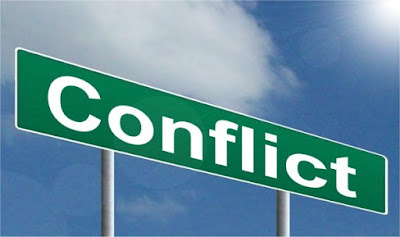What can Indo-Pak Conflict teach PMP Aspirants?

Recently, a PMP aspirant asked a question about the difference between the two conflict resolution techniques - Smoothing and Compromise - in PMP Cert Online Study Group. His question inspired me to write this article.
First, let’s understand what Smoothing and Compromise are, and then we’ll look at some examples to understand them better.
SmoothingPermalink
Smoothing (or Accommodating) is a conflict resolution technique where the areas of agreement are emphasized and those of disagreement downplayed. The points to note are:
- The issue is not resolved, but swept under the carpet. In other words, the issue is 'avoided'.
- Since the underlying issue still exists, the conflict may resurface.
- Smoothing is used when stakes are low.
CompromisePermalink
Compromise is a conflict resolution technique where the parties involved agree to “give up” something in order to resolve the conflict. The key points are:
- The issue is actually resolved, and not just covered-up.
- It is considered to be a lose-lose situation because both parties give up something.
- It takes more emotional intelligence than smoothing because the issue is brought out into the open and discussed.
- It may be useful when the stakes are moderate and when both parties want to maintain the relationship.
Put simply, Compromise is usually better than Smoothing, but depending upon the situation either one can be justified.
ExamplesPermalink
Let’s take the example of the dispute between India and Pakistan.
SmoothingPermalink
After the 2008 terrorist attacks in Mumbai, India suspended dialogue with Pakistan and demanded Pakistan to take action against the perpetrators. But a new development yesterday really caught my attention. When Indian PM and Pakistani Prez met in Egypt yesterday, they decided to delink the issue of terrorism from talks and resumed the dialogue on other issues. Here the main issue of terrorism has been “swept under the carpet”. The issue still exists and will surely resurface, but for now, they are talking to each other. This is a perfect example of ‘Smoothing’.
You can read the complete story here: India, Pak delink terrorism from dialogue
CompromisingPermalink
The whole world knows about the stand-off between India and Pakistan on the issue of Kashmir. Let’s say India and Pakistan decide to split Kashmir into two parts (I mean ‘officially’ split it) and take control of one part each. If they resolve the issue in this manner, it would be a ‘Compromise’. Both parties want Kashmir but at the end of the day, they resolve the conflict by ‘Compromising’ and giving up some part of their demand. This is just a hypothetical example. Since the stakes are so high, a compromise may not work in this situation.
I won’t delve further into politics. I hope you can clearly see the difference between Smoothing and Compromise now. Peace.
Image credit: NY Photographic
8 Comments
Anonymous
Vikas
Anonymous
Anonymous
Anonymous
Anonymous
shikzz
Harwinder Singh